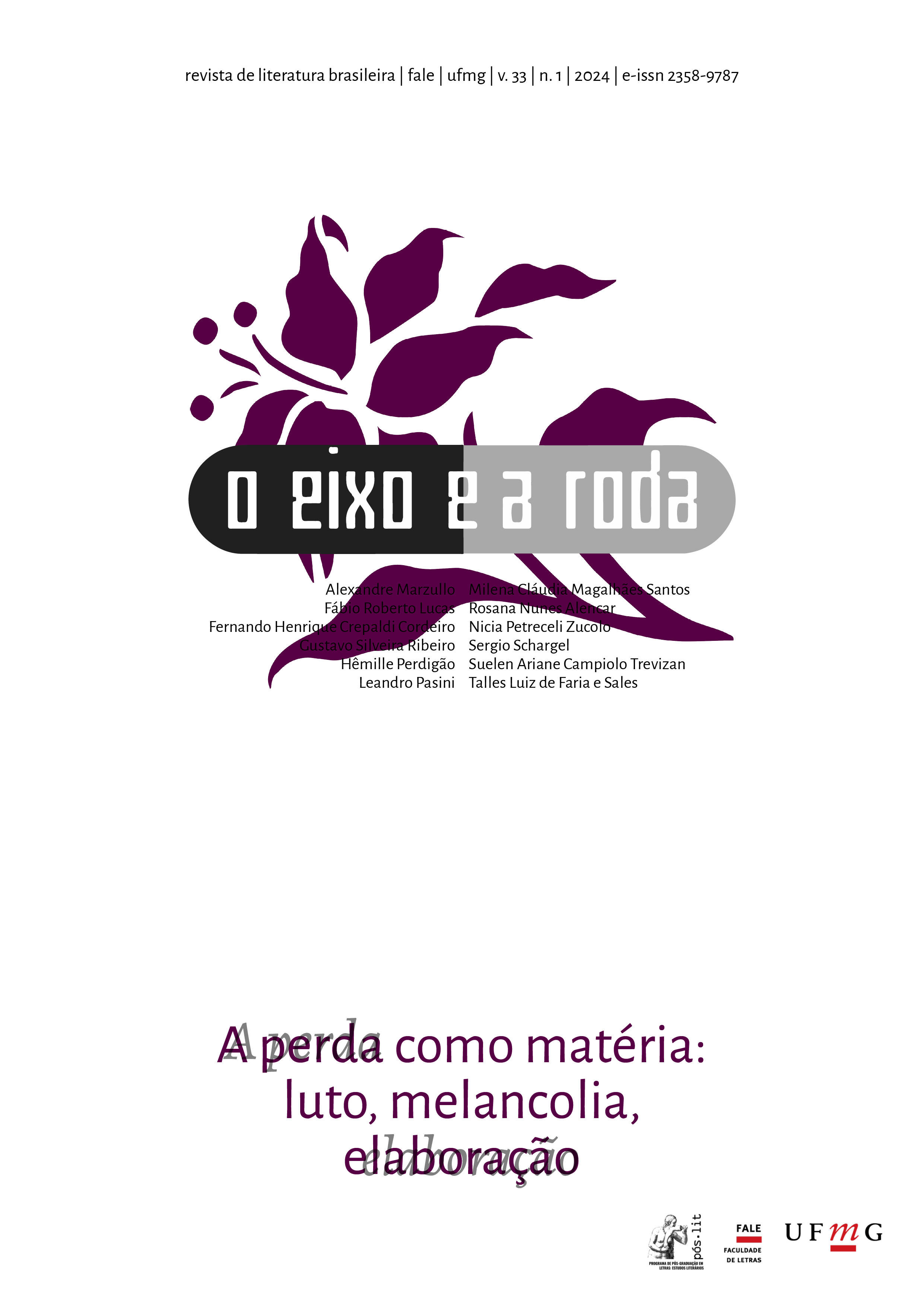Masquerade
narrator and author in Bufo & Spallanzani
Keywords:
narrator; author; Rubem Fonseca.Abstract
This work proposes a reading of the narrator and author roles in Bufo & Spallanzani (1986), by Rubem Fonseca. In order to do so, I will analyze the different functions of Gustavo Flávio. One of the protagonists and narrator of the novel, he constantly interrupts the narration to comment on topics such as literature, writing, the cultural market, among others, which brings him closer to the notion of author, according to Tacca (1983). Furthermore, Flávio introduces himself as a writer of novels who is specifically composing a narrative with the same title as that of Rubem Fonseca. In contrast to this author-character, there is also the expression of another author image that surreptitiously involves the whole novel. Such image “haunts” the narrative and has its contours better defined when Flávio, as narrator/author, is ironic. This idiosyncrasy of the Fonsecan narrative is highlighted when I discuss an aspect postulated by an important critic about the narrative process of the Brazilian author. I refer to the idea of Antonio Candido (1981), also developed by Mazzaferro (1984), that the most instigating works by Fonseca would be those in which the narrator/author discourse enables the narration of characters who belong to social strata less privileged, in a kind of “stylistic abdication” way. On the other hand, for Candido, narrators such as Flávio would relate to less interesting works for belonging to Fonseca’s social class.
Downloads
References
BOSI, Alfredo. Situações e formas do conto brasileiro contemporâneo. In: BOSI, Alfredo (Org.). O conto brasileiro contemporâneo. São Paulo: Cultrix, 1977. p. 7-22.
CAMPOS, Haroldo. O sequestro do barroco na formação da literatura brasileira: o caso Gregório de Mattos. Salvador: FCJA, 1989.
CANDIDO, Antonio. A nova narrativa. In: CANDIDO, Antonio. A educação pela noite & outros ensaios. São Paulo: Ática, 2000, p. 199-215.
CARVALHO, Ana. A metaficção como estratégia de renovação da forma em Bufo & Spallanzani. Revista Humanas. n. 3, out 2010, p. 1-16. Disponível em: www.revistahumanas.org.
FIGUEIREDO, Vera Lúcia. Os crimes do texto: Rubem Fonseca e a ficção contemporânea. Belo Horizonte: Editora UFMG, 2003.
FONSECA, Rubem. Bufo & Spallanzani. São Paulo: Companhia das Letras, 1991.
GOMES, Roberto. Crítica da razão tupiniquim. Porto Alegre: Mercado Aberto, 1984.
HANSEN, João Adolfo. Play it again, Rubem. Folha de São Paulo. São Paulo, 11 out 1997, Jornal de resenhas, p. 9.
LEITE, Lígia Chiappini M. O foco narrativo. São Paulo: Ática, 2002.
MAZZAFERRO, Silvia. Focalização e estilo em Rubem Fonseca. São José do Rio Preto, 171f. Dissertação (Mestrado em Literatura Brasileira) – Instituto de Biociências, Letras e Ciências Exatas, Universidade Estadual Paulista “Júlio de Mesquita Filho”, São José do Rio Preto (SP), 1984.
PELLEGRINI, Tânia. Ficção brasileira contemporânea: assimilação ou resistência? Novos Rumos, a. 16, n. 35, 2001, p. 54-64. DOI: 10.36311/0102-5864.16.v0n35.2221.
PETROV, Petar. O realismo na ficção de José Cardoso Pires e de Rubem Fonseca. Miraflores: DIFEL 82, 2000.
PRYSTHON, Ângela. Rubem Fonseca e o pós-modernismo literário brasileiro. Signótica. Goiânia, n.11 p. 9-27, jan./dez. 1999.
TACCA, Oscar. As vozes do romance. Trad. Margarida Coutinho Gouveia. Coimbra: Livraria Almedina, 1983.
TEZZA, Cristóvão. Rubem Fonseca e sua prosa irresistível. O Estado de São Paulo. São Paulo, 30 ago 1997, p. D7. Caderno 2.
TODOROV, Tzvetan. Tipologia do romance policial. In: As estruturas narrativas. Trad. Leyla Perrone-Moisés. São Paulo: Perspectiva, 1970, p. 93-104.
VARGAS LLOSA, Mario. A orgia perpétua: Flaubert e Madame Bovary. Trad. Remy Gorga Filho, Piero Angarano. Rio de Janeiro: Francisco Alves, 1979.




 Esta obra está licenciada com uma Licença
Esta obra está licenciada com uma Licença 